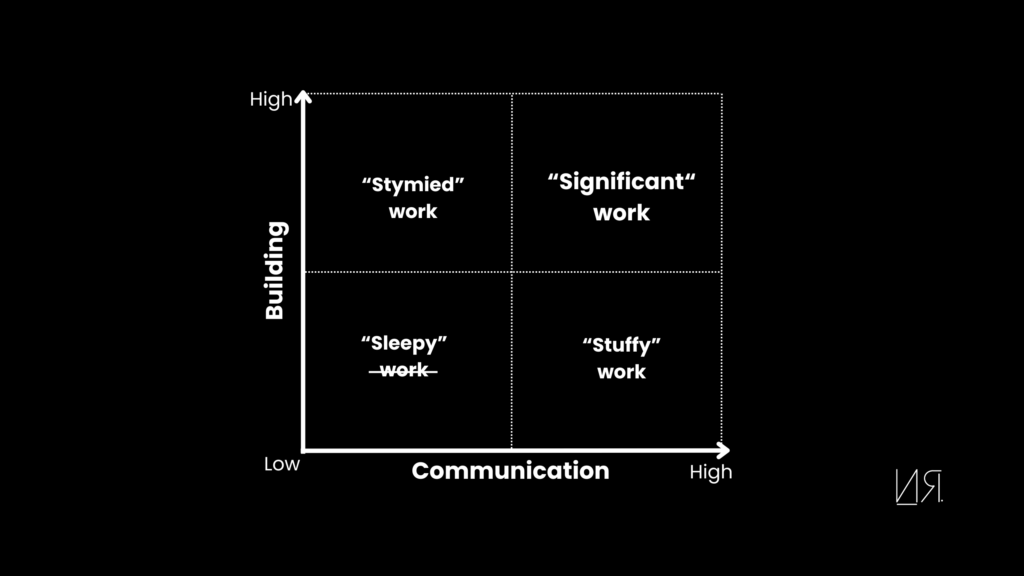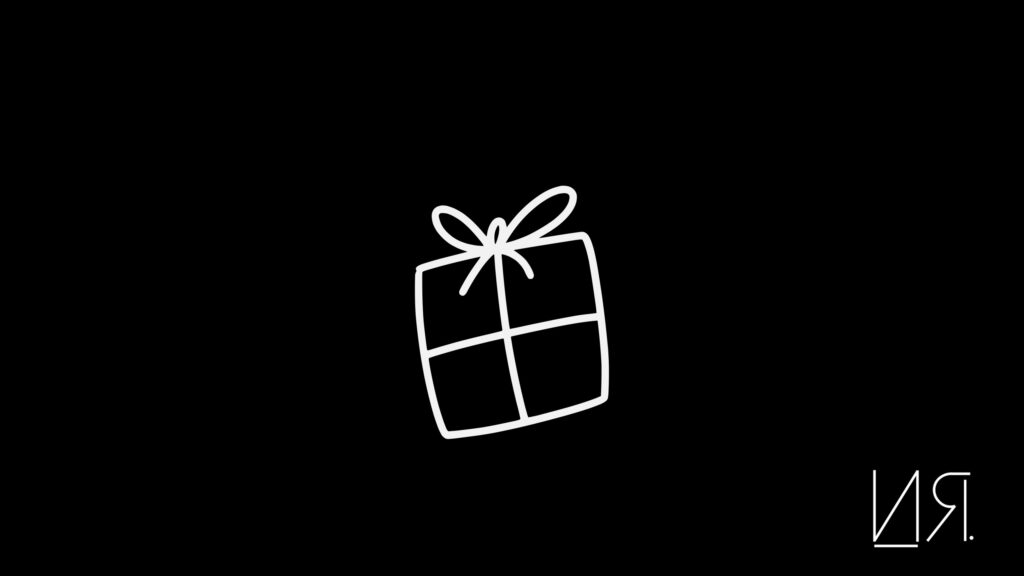Show your work after you do it.
When you build something that no one knows about, does it provide any value? That’s a question I keep asking myself.
I recently built a marketing app for an executive.
It was a side project that could have withered in the loveless land of “who gives a damn what you built” if I didn’t spend an hour writing a summary for the time-constrained professional.
They literally responded: “I LOVE THIS”
Did they love the app or my concise communication of the results?
Perhaps both.
It’s a reminder that even when you’re done building it, you still have a job to show it in the best light.
Build or Show?
Some people build but cannot communicate.
Some people communicate but cannot build.
Neither of the two personas maximize their impact.
The “builder-only” gets mad for lack of recognition of their work. The “communicator-only” gets credit for showing off other people’s work but deep down wished they could build theirs. This leads to a bunch of people not happy about their work and the people they work with.
There’s a third way, balancing building and communicating.

Because effectively communicating what you build is a skill on its own. You can build the greatest thing in the world but if no one knows about it, did it really contribute any value?
It’s not ‘OR’
It’s Build ‘AND’ Show.
Develop Your “Build-Communicate” Momentum:
I’m a builder….
I’ve built businesses, books, mixtapes. Like this Ahmad Jamal sample on this beat I made 11 years ago (oh, it’s funky….but let’s keep it moving). One thing I’ve learned along this path is: getting what you build into the hands of the people you built it for, is as important as building itself.
As an engineer, I dwelled in build mode.
As an entrepreneur, I learned that good communication is the ultimate leverage.
Build your communication skills to communicate what you build.
When you practice this skill, it will help you put your work in the best light, build better momentum, and find more meaning in the work you do.
Here’s how I’d approach it:
1. Understand the evolving landscape
Making stuff is becoming easier.
Distribution is becoming harder.
I remember when I built my first app back in 2014, I got on upwork (a freelance site), wrote a job description, sifted through applications, and interviewed multiple candidates, just to hire someone that couldn’t really do the job.
This happened several times. Finding a good crew was like searching for a needle in a haystack.
This isn’t unique to app development. In 2020, I wanted to make music videos for the mixtape of my book, Toffy’s Divide. I hopped on fiverr to find video editors. I got a mixed bag of results.
That was the name of the game.
If you didn’t have the skill, you went through this torturous task to find people to build with.
Fast forward just two years after making those videos, by 2022, it was possible to make the same videos by typing out a few lines in midjourney – an AI video creation tool – for a fraction of the cost.
How about the App? Now, with my limited coding skills, I can get a decent prototype using something like Replit or Cursor.
Granted, you still need a skilled video editor or developer to get exactly what you need but the barrier to creation has taken a nosedive with AI and it will continue to.
If everyone can create with ease, what’s going to happen?
Oh, you guessed it, a flood of information, content, and tools, along with ultra competition for people’s attention.
The person who can slice through that noise and get their valuable creation into the hands of those who need it builds the most momentum.
The distributor.
The entrepreneur.
The communicator.
Writing is going to be one of your best tools in this era.
2. Write the Bezos Way
Speaking of entrepreneurs, I just read The Bezos Blueprint: Communication Secrets of the World’s Greatest Salesman.
It goes through how Jeff Bezos, the founder of Amazon, used writing to spur innovation at Amazon, one of the largest organizations in the world.
He asked his leadership team to stop using PowerPoint presentations. Instead he requested they use a 6-page written memo to communicate their initiatives.
Why?
Because he learned the impact writing had on ideas. While a fancy PowerPoint deck can cloak a bad idea in fancy images and crisp bullet points, a written narrative-focused document forces you to flesh out your idea and organize your thoughts.
Writing is thinking.
It’s a critical skill in any profession because writing clarifies your thoughts, builds your ideas, and sharpens your communication.
You want to be better at anything you do, get better at writing.
3. Write your 1-page press release
Start from the end and walk backwards.
There’s a good chance you want someone to use whatever you build. Whether you’re creating a business solution or art, you want another human being to derive value from your product or creation. Start with the end in mind.
Use the press release format that businesses use to announce new solutions.
Bezos and his leadership team at Amazon would write a “mock press release” for a future product before they built it. It became a guide to innovate new products.
Use the press release to think through the next thing you build. For instance, I’m working on launching a podcast and I’ve been using it for clarity.
Here’s how to write a press release:
1. The headline: Announce who did what with just a few words. (e.g. “Amazon announces new kindle”).
2. Sub-headings: This is the first sentence under the title explaining the most compelling benefit, differentiating what you build. It’s the hook and must be written in the most concise and accessible language of not more than 30 words.
3. Summary paragraph. It begins with location and date. It offers a summary of the product and its benefits. Put 80% of your creative energy in the headline, subheading, and the summary paragraph because 80% of readers will stop reading here.
4. Problem paragraph: The second paragraph raises the problem that your product is there to solve.
5. Solution and benefits: in the next section, include 3 – 6 short paragraphs (3-4 sentences) of the benefits of your solution.
6. Quotes: from partners, publications, and customers. This will help clarify what you want people to say in an ideal release.
Your press release should all fit on one page.
Write a draft.
Edit it. Send it to a friend.
Ask for feedback. Edit it again.
Build with the end in mind.
Do significant work….
The ability to convey a meaningful idea in the most effective way is a crucial skill.
Cut through the noise by building and showing your work.
Understand the evolving landscape, realize the power of effective writing, and start from the end with your ideal press release.
In a future letter, I would talk about other writing tools to build your communication toolkit.
If there’s one thing to remember, the best builders communicate.
Yours truly,
Nifemi
P.S. If this is a topic you’d like to hear more about, can you reply to this email with a simple “yes” and one line about why.


